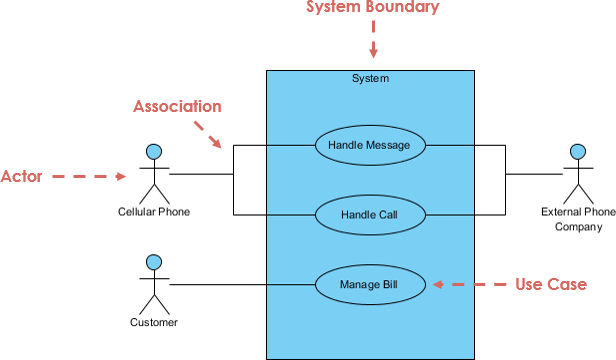
Use-Case
Use-case is a formal way of representing how a business system interacts with its environment. In other words, the use-case is a list of actions or event steps typically defining the interactions between a role and a system to achieve a goal. Illustrates the activities that are performed by the users of the system. A scenario-based technique in the UML. A sequence of actions a system performs that yields a valuable result for a particular actor.
Use-Case Diagram

Use case diagrams to describe what a system does from the standpoint of an external observer. The emphasis is on what a system does rather than how. Use case diagrams are closely connected to scenarios. A scenario is an example of what happens when someone interacts with the system. In other words, A use case diagram at its simplest is a representation of a user’s interaction with the system that shows the relationship between the user and the different use cases in which the user is involved.
Actor
An actor is who or what initiates the events involved in the task of the use case, Actors are simply roles that people or objects play. In other words, An actor in use case modeling specifies a role played by a user or any other system that interacts with the subject.
So as we read our scenario, what or who is the actor????
A patient calls the clinic to make an appointment for a yearly checkup. The receptionist finds the nearest empty time slot in the appointment book and schedules the appointment for that time slot. “The actor is a Patient, the Use Case is Make Appointment and It is a use case for the medical clinic.
The use-case has three components
- The use case task referred to as the use case that represents a feature needed in a software system.
- The actor(s) trigger the use case to activate.
- The communication line shows how the actors communicate with the use case.
you may also like Feasibility Analysis

Leave a Reply